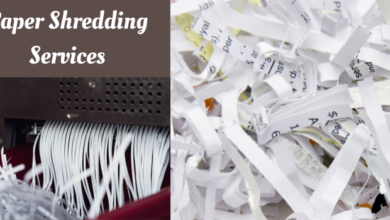A Comprehensive Guide to Stem Cell Therapy in India
Stem cell therapy is revolutionizing the medical landscape, offering new hope for treating a variety of conditions that were once deemed challenging or incurable. India, with its blend of cutting-edge technology, expert medical practitioners, and cost-effective healthcare solutions, stands at the forefront of this exciting field. This guide walks you through the process of stem cell therapy in India, highlighting each critical step and how it contributes to effective treatment outcomes.
Introduction to Stem Cell Therapy
Before we delve into the intricacies of the stem cell therapy process, it’s essential to understand what stem cells are and how they function in medical treatments.
What Are Stem Cells?
Stem cells are remarkable undifferentiated cells capable of transforming into specialized cell types, such as muscle cells, nerve cells, and blood cells. Their unique ability to self-renew and differentiate is crucial for embryonic development, tissue repair.
And regeneration. Sources of stem cells include adult tissues, embryos, and induced pluripotent stem cells (iPSCs), which are reprogrammed adult cells. Stem cell therapy in India utilizes these cells to repair or replace damaged tissues and organs, paving the way for advancements in regenerative medicine and new therapeutic approaches.
Benefits of Stem Cell Therapy
Stem cell therapy uses these cells to treat or prevent various diseases and injuries by promoting the repair, regeneration, or replacement of damaged tissues. Conditions such as certain cancers, autoimmune disorders, neurological diseases.
Heart disease, and spinal cord injuries have shown promising responses to stem cell therapy. While research continues to refine its applications, stem cell therapy in India offers a pioneering approach to medical treatment that combines innovation with practical therapeutic potential.
Step-by-Step Process of Stem Cell Therapy in India
India has emerged as a premier destination for stem cell therapy, known for its advanced medical infrastructure, skilled professionals, and affordable treatment options. Here’s a detailed guide to the stem cell treatment process in India:
1. Initial Examination and Umbilical Cord Collection
The first step involves collecting umbilical cord blood from healthy mothers who willingly donate after childbirth. This process starts with comprehensive health examinations and thorough medical histories of both the mother and her family to ensure the highest quality of donations.
Only after multiple screenings and rigorous protocols are met is the umbilical cord blood collected. This stringent process guarantees the health and safety of the samples used for stem cell therapy, adhering to high standards of medical practice.
2. Extensive Testing and Validation
Once collected, the samples undergo extensive testing to rule out any communicable diseases. The samples are then sent to specialized laboratories for detailed analysis. These laboratories are responsible for processing the samples and ensuring their quality.
Additional testing checks for the presence of viruses, bacteria, fungi, and other microorganisms. As well as evaluating stem cell biological characteristics such as their ability to form colonies and differentiate. This thorough testing phase is crucial to ensuring that the stem cells meet the highest quality standards before moving to the next stage.
3. Separation of Components
In this step, the essential components are separated from the cord blood serum. This involves isolating the stem cells and removing blood cells to prevent any potential interference in future treatments. A centrifuge is used to effectively separate the serum and stem cells from red blood cells and platelets. This meticulous separation process ensures the purity of the stem cells, which is vital for their effectiveness in therapeutic applications.
4. Culturing the Stem Cells
We carefully introduce the isolated stem cells into a flask containing a growth medium enriched with various cell growth agents. This medium, which includes fetal calf serum and no animal products, facilitates the optimal growth and expansion of the stem cells.
We place the flasks in a sterilized incubator with controlled temperature and humidity. The stem cells extensively expand within this culture medium. Once we complete the culturing process, we harvest the stem cells from the medium, preparing them for the next phase.
5. Cryopreservation of Stem Cells
6. Final Testing, Packaging, and Transfer
Before using each batch of stem cells, we perform final testing to confirm their quality and safety. We conduct rigorous quality checks to ensure that the stem cells are free from contaminants and meet all necessary standards. Once we verify the quality, we carefully package the stem cells into sterile vials or IV bags, preparing them for transplantation.
We meticulously catalog and track each stem cell unit throughout the system, ensuring transparency and accountability in the handling and transfer process. We typically schedule the cell transplants within two to three days a week, following the completion of the preparation stages.
Leveraging Online Platforms for Consultation and Support
The rise of medical experts online and online medical consultation services has further streamlined the stem cell therapy process in India. Through best virtual hospital platforms, patients can connect with leading experts, discuss their treatment options, and receive guidance on their therapy. This integration of technology enhances accessibility, providing patients with timely and expert medical advice from the comfort of their homes.
Conclusion
Navigating the path to stem cell therapy in India involves a comprehensive process designed to ensure the highest standards of safety, quality, and effectiveness. From initial examinations and rigorous testing to advanced culturing and cryopreservation. Each step is meticulously executed to provide patients with the best possible outcomes.
By choosing stem cell therapy in India, patients embark on a journey towards innovative and transformative medical solutions. Supported by world-class infrastructure, expert practitioners, and a holistic approach to patient care. India offers a leading-edge experience in stem cell therapy. This guide aims to provide a clear understanding of the process, empowering patients to navigate their treatment with confidence and optimism.



